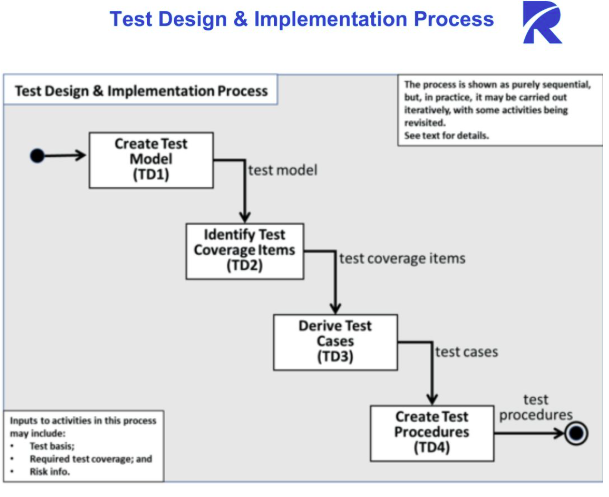Software Testing Decoded: In-depth Insights into its Significance, Methodology, Safety Measures, and Advancements
Software testing is a crucial part aimed at improving software quality and early detection of problems.
Today, there still exist some companies that do not understand the importance of software testing and feel that the cost of software testing is a waste of money. In fact, the goal is to provide high-quality software by finding and correcting bugs and defects that occur during the software development process. In this article, Relipa will explain in detail the purpose, process, and importance of software testing, the role of the tester, etc.
Read on to learn about software testing, which is essential for improving software quality.
What is Software Testing?
Software testing is the process of checking the quality and functionality of software and finding and fixing problems. It is an important part of the software development lifecycle and is done to ensure that the software meets user requirements and specifications.
Software Testing helps us improve the quality of our software and provide users with a more reliable product.
Software testing happens at different points while creating software. There are specific times when this testing occurs:
- Unit Testing: Here, we check if each part of the software works correctly. Developers do this right after writing their code. These tests ensure that the software’s basic functions are right.
- Integration Testing: This is where we put different parts together to see if they work right. We find out if different parts cause issues when they come together.
- System Testing: We test the whole software here to make sure it does what it’s supposed to. We check if it meets all the needs and plans.
- Acceptance Testing: In this step, the user or client checks if the software does what they want. They make sure it meets their needs.
Software testing doesn’t just happen in these steps; it can happen all the time during development. If we test early, we can find and fix problems early, making the software better. Methods like agile development often do testing all the time, whenever they add or change something.
Purpose of Software Testing
The purpose of software testing is software quality assurance. The aim is to provide high-quality software by finding and correcting bugs and defects that occur during the software development process.
The main software testing objectives are:
- Bug Fixing: Identifying and correcting bugs and errors to ensure the software works properly.
- Functionality Check: Making sure the software performs its intended functions correctly.
- Performance Assessment: Evaluating how well the software performs, including measuring resource usage and response time.
- Security Assurance: Identifying vulnerabilities and security issues in the software and addressing them for a safe outcome.
- Usability Evaluation: Checking if the software is user-friendly and easy to use.
- Meeting Requirements: Confirming that the software meets user needs and specifications.
- Unit Testing: Testing individual parts of the software separately.
- Integration Testing: Testing combined elements and modules.
- System Testing: Checking the overall performance of the entire software.
Software has a very complicated structure, and as the scale of development increases, the probability of unexpected failures also increases. However, releasing faulty software not only affects user convenience and safety but can also have a significant negative impact on a company’s reputation and credibility.
Therefore, software testing uses various testing methods and tools before the end of development. This is an important process for checking software operation and quality. By finding bugs through software testing and fixing them, we can provide users with stable operation and high-quality software.
Software testing has a significant impact on the schedule and budget of software development, so it is important to conduct it in a planned manner. By testing at an early stage and finding and fixing defects early, you can prevent problems later in the development process and at the time of release.
However, software testing is only a complementary activity and does not guarantee complete quality assurance. You can’t prove that there are no bugs, and you can’t test everything. Risk analysis and test prioritization are therefore also important factors.
Software testing is not only for developers and testers, Third-party perspectives and feedback are also important. It is possible to realize higher quality software by borrowing the eyes of a third party in order to discover defects and improvements that the developer has overlooked.
Software testing is an irreplaceable process for improving the quality of software development. In order to meet the demands and expectations of developers and users, it is important to actively engage in software testing and provide high-quality software.
Types of Software Testing
There are various techniques of software testing in the development process. As a means to enhance the quality of software, it is crucial to combine these testing methods and perform exhaustive testing. In the following part, we will introduce the main techniques of software testing.
- Unit Testing: tests whether individual software components or modules work correctly. It is usually done right after the developer writes the code and is commonly automated.
- Integration Testing: Combine multiple components or modules and test the interaction between them. Check if the components work together correctly.
- System Testing: Test whether the entire software satisfies the requested functionality. Perform tests from an external perspective of the system to verify behavior due to user operations.
- Acceptance Testing: A test in which a user or client evaluates the software to see if it meets their requirements. It is done from the user’s point of view and is usually the last step.
- Regression Testing: A test to ensure that existing functionality is not affected when new changes or modifications are made to the software. It helps prevent bugs from recurring.
- Performance Testing: A test for evaluating software performance and capabilities. Measure resource usage, response time, and more to identify bottlenecks.
- Security Testing: A test that identifies software security vulnerabilities and verifies confidentiality and data protection issues.
- Usability Testing: A test that evaluates whether the software is user-friendly. Validate usability and user experience.
- Alpha and Beta Testing: Alpha testing is internal developer testing, and beta testing is testing by the general public. It is done to test early versions of the product and gather feedback for improvements.
These are examples of some software testing types. Choosing the right test strategy for your project’s needs and goals is important.
Specific Steps in the Software Testing Process
A software testing process is a set of steps taken to ensure the quality of software. Below are the main steps in the software testing process.
- Developing a Test Plan
The first step in the software testing process is developing a test plan. A test plan contains the overall plan for testing, including test scope, objectives, test strategy, test schedule, and resource allocation. A test plan is important to ensure a common understanding with developers and testers as it sets the direction of testing. - Writing Test Cases
Next, create a test case. Test cases define specific test items, input data, and expected results based on software functions and requirements. Test cases provide concrete steps to verify software behavior. To create test cases, it is necessary to understand the specifications and requirements of the program and to cover many test items. - Conducting the Test
Once the test cases are created, the actual testing is performed. During testing, the created test cases are used to test each function and requirement of the software. Testing can be done efficiently by using test tools and automation tools. In addition, if a defect is found in the process of conducting the test, we will report the defect in detail. - Report and Fix Bugs
Defects found during the testing process are reported to the developer in a detailed report. Developers fix reported defects and retest. After fixing defects and performing retesting, resume testing and perform the remaining tests. This cycle repeats until all defects are fixed and the tests pass. - Test Evaluation and Reporting
Once the test has been completed, evaluate and report on the test. The test evaluation analyzes the test results and evaluates the quality and risks of the software. In addition, in the test report, we will report information such as test results, details of defects, test scope, and executed test cases. By doing so, we can share test results and failure status with related parties and use them to improve the quality of software.
These are the main steps in the software testing process. In it, testers play a key role in the entire software testing process, from test plan development to test execution, defect reporting, and fixing.

Software test process according to ISO/IEC/IEEE 29119
(Source: Translated from AGEST “ISO/IEC/IEEE 29119 SOFTWARE TESTING STANDARDS”)
Also, in software testing, there are standards. It is “ISO/IEC/IEEE 29119”. “ISO/IEC/IEEE 29119” is an international standard for software testing developed by the International Organization for Standardization (ISO). Earning the ISO/IEC/IEEE 29119 certification proves your company’s adherence to international software testing standards and processes. This builds confidence in the quality of our products and testing services from our customers and partners.
As a software development company, Relipa is ISO certified focuses on training quality testers, and always ensures that the software development process achieves ISO standards.
Let’s see the development achievements of Relipa!
Who Does Software Testing?
Software testing involves various roles, each contributing to the overall quality of the software:
- Tester: Testers are professionals dedicated to software testing. They assess software quality and functionality, pinpoint bugs and glitches, and document issues. Testers formulate test plans and cases, perform tests manually, and may also automate tests using specialized tools.
- Developer: Software developers play a significant role in testing too. They run unit and integration tests to verify the accuracy of their code. Developers collaborate with testers to fix bugs and interpret test outcomes, ensuring code meets quality standards.
- Quality Assurance (QA) Team: The QA team manages the entire testing process. They create test plans and strategies, aiming to enhance overall project quality. Their oversight ensures comprehensive testing and adherence to quality objectives.
- End User: Software’s end users participate in acceptance and usability testing. By evaluating the software from their perspective, they replicate real-world usage conditions. Their input helps ensure the software meets practical needs.
- Third-Party Verification: External organizations or experts provide third-party verification. They objectively assess and validate software, offering valuable insights into quality and security from an independent standpoint.
These roles collaborate harmoniously to optimize software testing efforts and ensure the software’s overall quality.
10 Rules and Precautions for Preventing Bugs and Reducing Development Costs
5 Things to Keep in Mind in Software Testing
It is of paramount importance to test software in the product development cycle. Notwithstanding, there are some caveats when testing software. Here are some tips for software testing.
- Sufficiency and appropriateness of test cases
Test cases are specific input data and operating procedures for testing software functionality. Test cases should be prepared in sufficient numbers and with appropriate content. Having a sufficient number of test cases will help you find defects early. By preparing test cases with appropriate content, software requirements can be exhaustively tested. Creating test cases requires an understanding of requirements and domain knowledge.
- Reproducing the environment during the test
When testing software, it is important to reproduce the actual production environment. If the test environment is different from the production environment, the test results may differ from the actual operation results. Also, testing in different environments can introduce bugs and issues. Reproducing the test environment requires the appropriate tools and settings.
- Acquisition and analysis of test logs
It is important to obtain test logs when conducting tests. The test log records the details of the test execution and the contents of errors. Obtaining and analyzing test logs can help identify the cause of bugs, performance issues, and more. Take advantage of tools and techniques to properly manage your test logs and extract the information you need.
- Evaluation and reporting of test results
After conducting the test, the test results should be evaluated and reported. Test results are evaluated using predefined test criteria and quality targets. Use test reports and bug reports to report test results. Reports are an important source of information for developers and stakeholders to understand and fix problems.
- Leverage automated testing
It is also effective to utilize automated testing for efficient testing. Automated testing can be expected to improve reproducibility and efficiency. It is also particularly effective for repetitive tests and tests with large amounts of data. However, the introduction of automated testing requires appropriate tool selection, script creation, and maintenance.
Five Rules for Preventing Bugs and Reducing Development Costs
Here are five rules for preventing bugs and reducing development costs in software testing:
- Appropriate requirements definition and specification formulation: Establish clearer requirements and software specifications. Bugs and misunderstandings are minimized when development is guided by accurate specifications.
- Thorough unit testing: Developers should do thorough unit testing to ensure the quality of their code. Unit tests ensure that basic functions and processes in your code work correctly.
- Continuous integration and continuous testing: Adopt continuous integration (CI) and continuous testing (CT), and do regular integration and testing early in development. This enables early detection and correction of problems, reducing development costs.
- Risk-based test plan: Evaluate project risks and develop a risk-based test plan. Reduce the risk of introducing bugs and optimize resources by focusing testing on critical functions and high-risk areas.
- Leverage automated testing: Automate routine test cases and repetitive tests. Automated testing enables efficient test execution, reduces human error, and reduces development costs.
By following these rules, you can prevent bugs in software testing and reduce development costs.
Summary
Software testing is an essential part of developing quality software. However, while software testing does not guarantee perfect quality assurance, the combination of risk analysis, prioritization, third-party perspective, and feedback can lead to higher-quality software. In order to meet the demands and expectations of developers and users, it is important to actively engage in software testing and provide high-quality software.
If you feel that it is difficult to find out which software development company is right for you, please contact Relipa.
We will collaborate through interactive meetings and discussions to present the optimal services tailored to your company’s development requirements!





